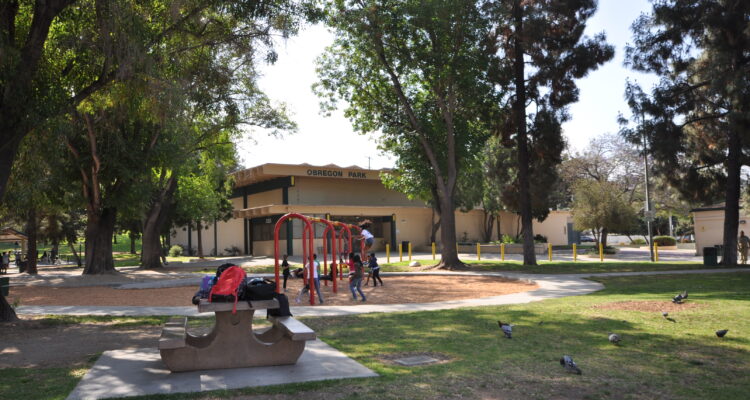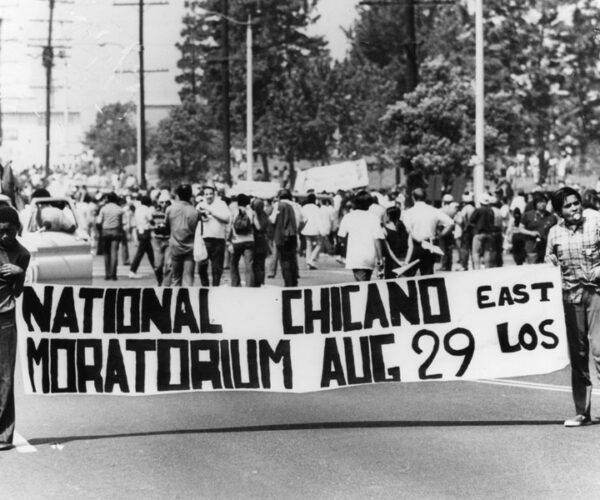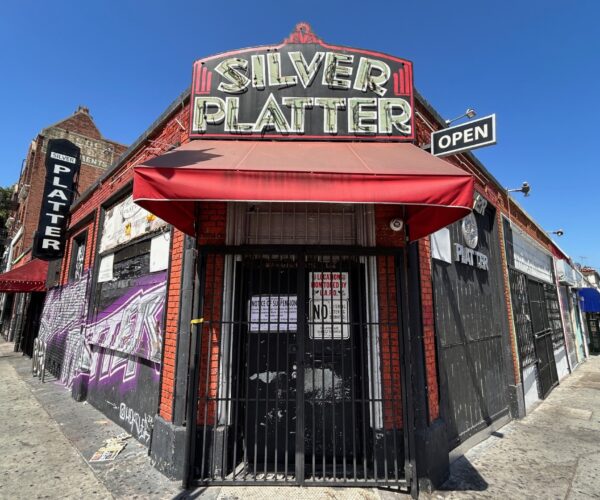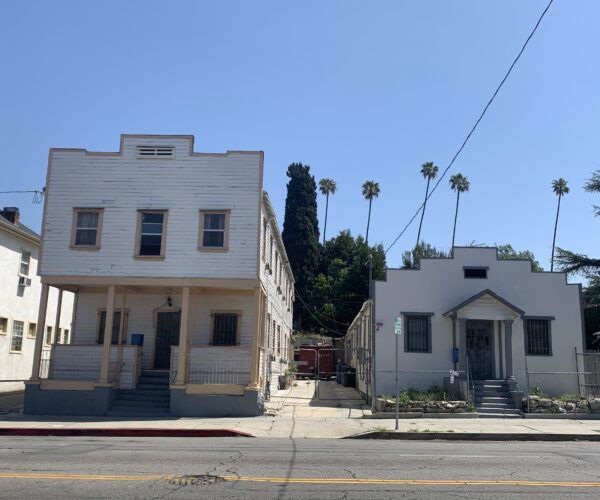
Place
Eugene A. Obregon Park
Place Details
Address
Get directions
Year
Style
Decade
Designation
Property Type
Community
Eugene A. Obregon Park is spread over a sprawling seven acres at the crossroads of Michigan Avenue, Marianna, Avenue, and East 1st Street. The western side of the parks follows the undulating path of Sunol Drive.
The park serves the unincorporated community of East Los Angeles. It has various recreational fields as well as an open field filled with mature trees.
Obregon Park was developed in the 1960s, and its athletic structures were added in 1967. The park is named in honor of Mexican American marine Eugene A. Obregon, who was killed in action during the Korean War on September 26, 1950. Obregon was posthumously awarded the Congressional Medal of Honor on August 30, 1951.
In addition to commemorating a local war hero, the park is significant to the history of the Chicano Civil Rights Movement in the 1960s and ‘70s. On December 20, 1969, it was the terminus of the first Chicano Moratorium demonstration, in which 1,000 people marched in protest of the Vietnam War.
The march began at Los Cinco Puntos, before protestors headed south on Indiana Street then east on Michigan Avenue to reach Obregon Park.
This event was key milestone in the broader struggle for Chicanx rights and equality in East Los Angeles.



